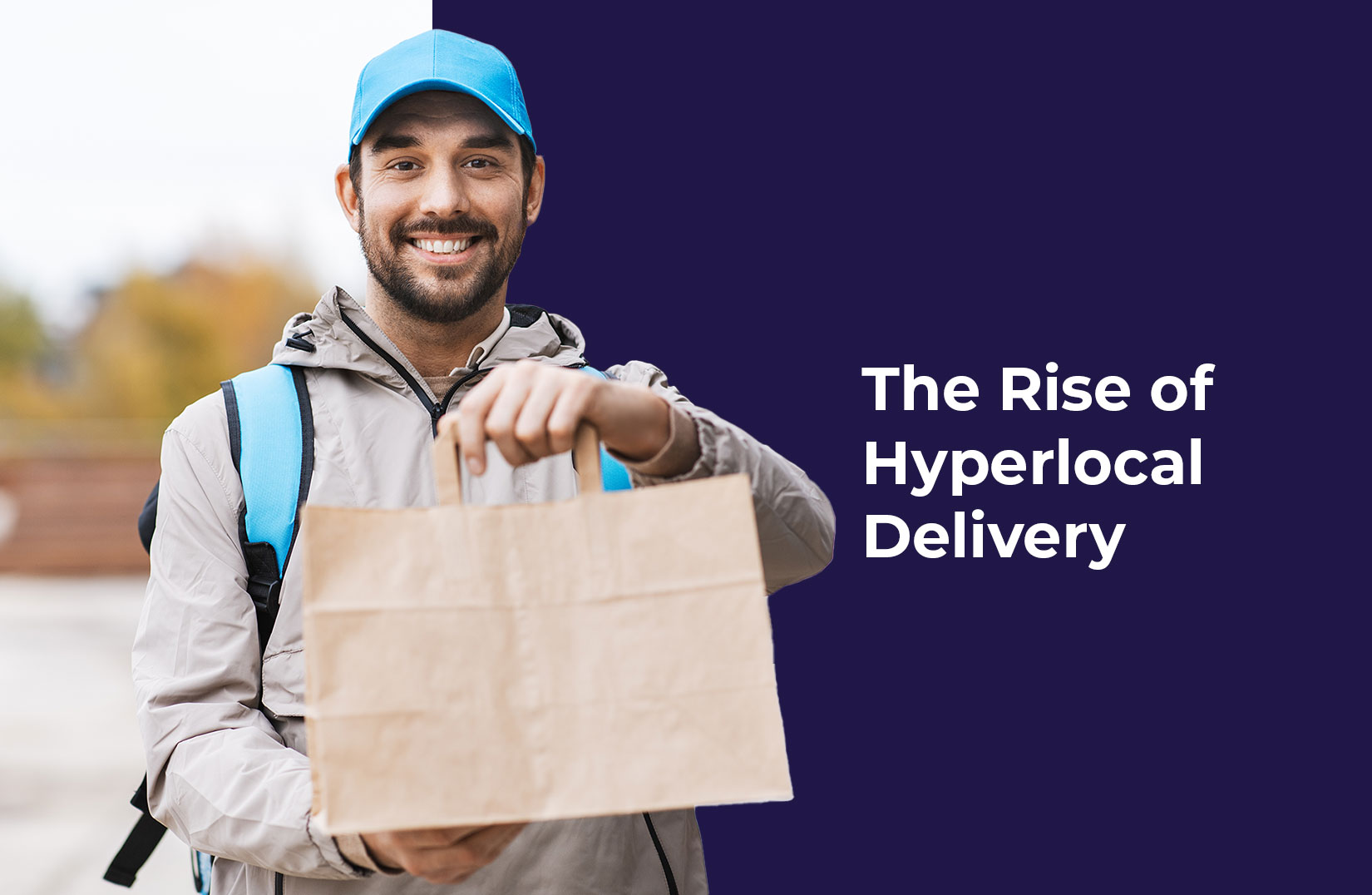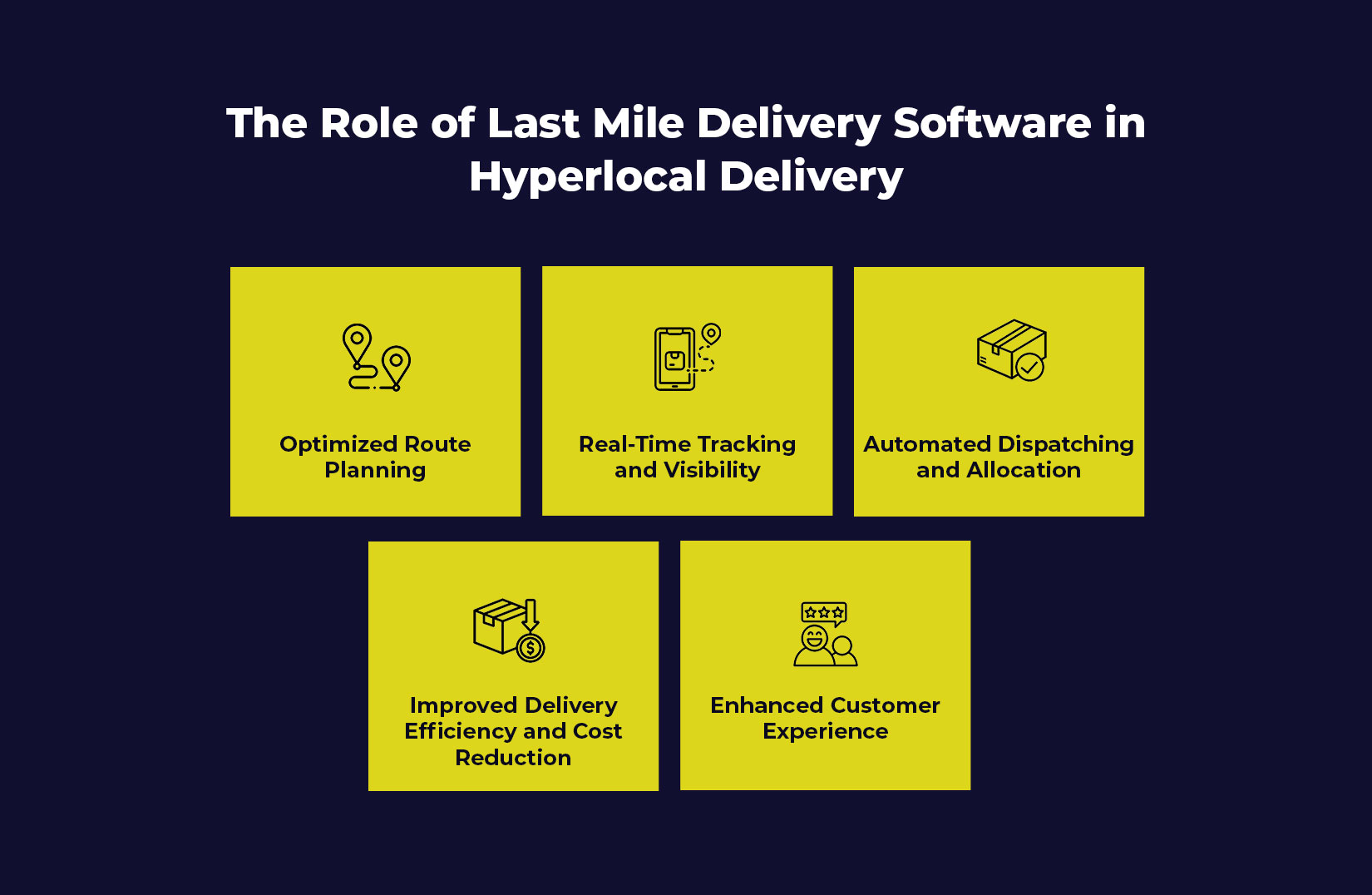
Hyperlocal Delivery: How Last Mile Software Can Support Micro-Delivery Models
The logistics industry is evolving rapidly, and hyperlocal delivery is emerging as a dominant model. With growing consumer demand for faster and more efficient deliveries, businesses are adopting last mile delivery software to streamline operations. This article explores how last mile software enhances micro-delivery models and the key features businesses should look for in the best last mile delivery software.
The Rise of Hyperlocal Delivery

Hyperlocal delivery refers to the process of delivering goods within a small geographical area, usually within a few miles of the seller or distribution center. It enables businesses to provide faster deliveries by leveraging local supply chains. This reduces the need for extensive warehousing and long-distance transportation. Industries such as food delivery, pharmaceuticals, and grocery distribution rely heavily on this model. E-commerce businesses also use it to meet customer expectations for same-day or even one-hour deliveries.
With urbanization and the rise of digital commerce, hyperlocal delivery has become a crucial component of modern logistics. A report by McKinsey states that same-day delivery is expected to grow by 25% annually. This emphasizes the increasing demand for fast and efficient shipping solutions. Businesses adopting last mile delivery solutions are better positioned to handle growing order volumes while minimizing operational costs and maximizing customer satisfaction.
The Role of Last Mile Delivery Software in Hyperlocal Delivery

Last mile delivery software plays a critical role in managing hyperlocal deliveries by optimizing routes, tracking shipments, and reducing operational costs. Here are some key ways in which this software supports micro-delivery models:
1. Optimized Route Planning:
Hyperlocal deliveries require efficient routing to ensure timely deliveries. A last mile delivery system uses AI and machine learning algorithms to determine the best routes based on real-time traffic data. This minimizes delays and reduces fuel costs. With automated route adjustments, drivers can avoid congestion and unexpected roadblocks, leading to a more seamless delivery process. Businesses using AI-driven route optimization report a reduction in delivery time by up to 20%, making it a crucial tool for hyperlocal logistics.
2. Real-Time Tracking and Visibility:
Businesses and customers need accurate delivery tracking. A robust last mile delivery tracking software provides real-time updates on order status, estimated time of arrival, and driver location. This transparency enhances customer trust and satisfaction. Additionally, GPS-enabled tracking allows businesses to monitor driver performance, ensuring accountability and efficiency. Studies show that 93% of consumers expect to receive proactive updates about their deliveries. This makes real-time tracking an essential feature for modern delivery solutions.
3. Automated Dispatching and Allocation:
Manual dispatching can lead to inefficiencies. The best last mile delivery software automates order assignment based on factors such as driver availability, proximity and delivery urgency. This ensures optimal resource utilization and minimizes delays. Automated dispatching also reduces the likelihood of human errors, improving accuracy in order fulfillment. Businesses that implement automated dispatching have reported up to a 25% increase in delivery efficiency, ensuring smoother operations and faster turnaround times.
4. Improved Delivery Efficiency and Cost Reduction:
Inefficiencies in last mile delivery can increase costs. A well-integrated last mile delivery solution helps businesses reduce failed deliveries, optimize fuel usage, and lower operational expenses. By using predictive analytics and AI, businesses can identify areas for improvement. These may include underutilized delivery vehicles or inefficient delivery routes. Research indicates that companies using last-mile delivery optimization tools see a 10-15% reduction in logistics costs. This makes it a financially viable investment.
5. Enhanced Customer Experience:
Customer expectations for fast and reliable deliveries are higher than ever. Features like delivery notifications, flexible scheduling, and real-time communication through last mile delivery software improve the overall customer experience. Businesses that offer flexible delivery options, such as rescheduling and contactless delivery, report higher customer retention rates. According to a survey, 74% of consumers are more likely to shop again with a retailer that provides a seamless last mile delivery experience. Thereby, highlighting the importance of customer-centric delivery solutions.
The Future of Hyperlocal Deliveries
As e-commerce and on-demand services continue to grow, the need for efficient last mile delivery solutions will increase. Businesses investing in the best last mile delivery software will gain a competitive edge by improving speed, accuracy and customer satisfaction. Advancements in AI, automation and drone-based deliveries are expected to further streamline last mile logistics. Companies that embrace these innovations will be able to scale their operations efficiently while reducing costs and meeting customer expectations for ultra-fast deliveries.
Moreover, sustainability will become a major focus in hyperlocal delivery. Businesses will prioritize eco-friendly delivery solutions such as electric vehicles and bike couriers to reduce carbon footprints. As consumer preferences shift toward sustainable practices, adopting green logistics strategies will become a competitive advantage in the hyperlocal delivery space.
Conclusion
Hyperlocal delivery is transforming the logistics industry, and last mile delivery software is at the core of this evolution. By optimizing routes, enhancing tracking capabilities, and improving efficiency, businesses can meet growing consumer demands. Investing in a reliable last mile delivery system is essential for businesses aiming to thrive in the fast-paced world of micro-deliveries.
As technology advances, companies that integrate AI, automation, and real-time tracking into their last mile delivery strategies will achieve better efficiency and cost savings. The future of hyperlocal delivery lies in embracing smart logistics solutions that enhance speed, accuracy, and sustainability. These advancements also help deliver an exceptional customer experience. Thus, it a necessity to embrace smart logistics solutions and last mile delivery software like LogiNext. Click on the red button below to book a demo today!
39







@LogiNext